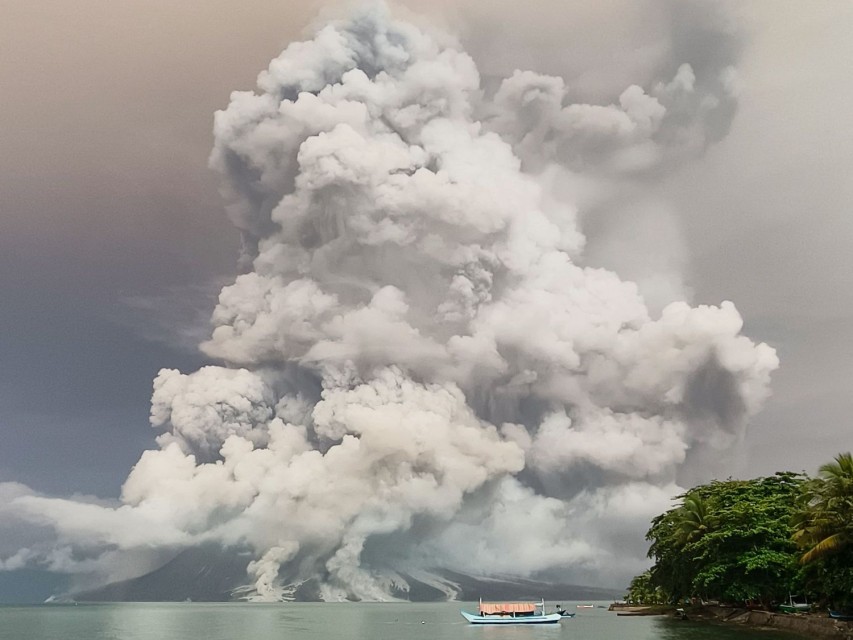
MANADO, Indonesia, April 30, 2024 (AFP) – Indonesia’s remote Mount Ruang volcano erupted several times again on Tuesday, the country’s volcanology agency said, forcing evacuations, the closure of a nearby international airport and the raising of the alert level to its highest.
Authorities had warned the threat from the volcano was not over after it erupted more than half a dozen times this month, sparking the evacuation of more than 6,000 people.
Ruang, located in Indonesia’s outermost region of North Sulawesi province, erupted at around 01:15 am local time (1715 GMT Monday) and twice more Tuesday morning, the volcanology agency said in a statement.
The volcano sent a tower of ash more than five kilometres (3.1 miles) into the sky, it said.
The agency also re-instated a six-kilometre (3.7-mile) exclusion zone and said locals should be aware of “the potential for ejections of incandescent rocks, hot clouds and tsunamis due to eruption material entering the sea”.
Images released by the agency showed a molten red column bursting into the sky, a large ash cloud spilling from the crater and burning embers near local houses.
More than 800 people live on Ruang, all of whom were evacuated this month.
Some had returned to their homes after the emergency response status ended on Monday, an AFP journalist said.
It was unclear how many residents had gone back and how many were forced to evacuate one more.
Ruang’s latest eruption also prompted authorities to again close Sam Ratulangi international airport in the provincial capital of Manado, more than 100 kilometres away, according to a notice from state-run air traffic control provider AirNav Indonesia.
The notice said the airport was shutting down due to “Ruang volcanic ash”.
Indonesia, a vast archipelago nation, experiences frequent seismic and volcanic activity due to its position on the Pacific “Ring of Fire”.







